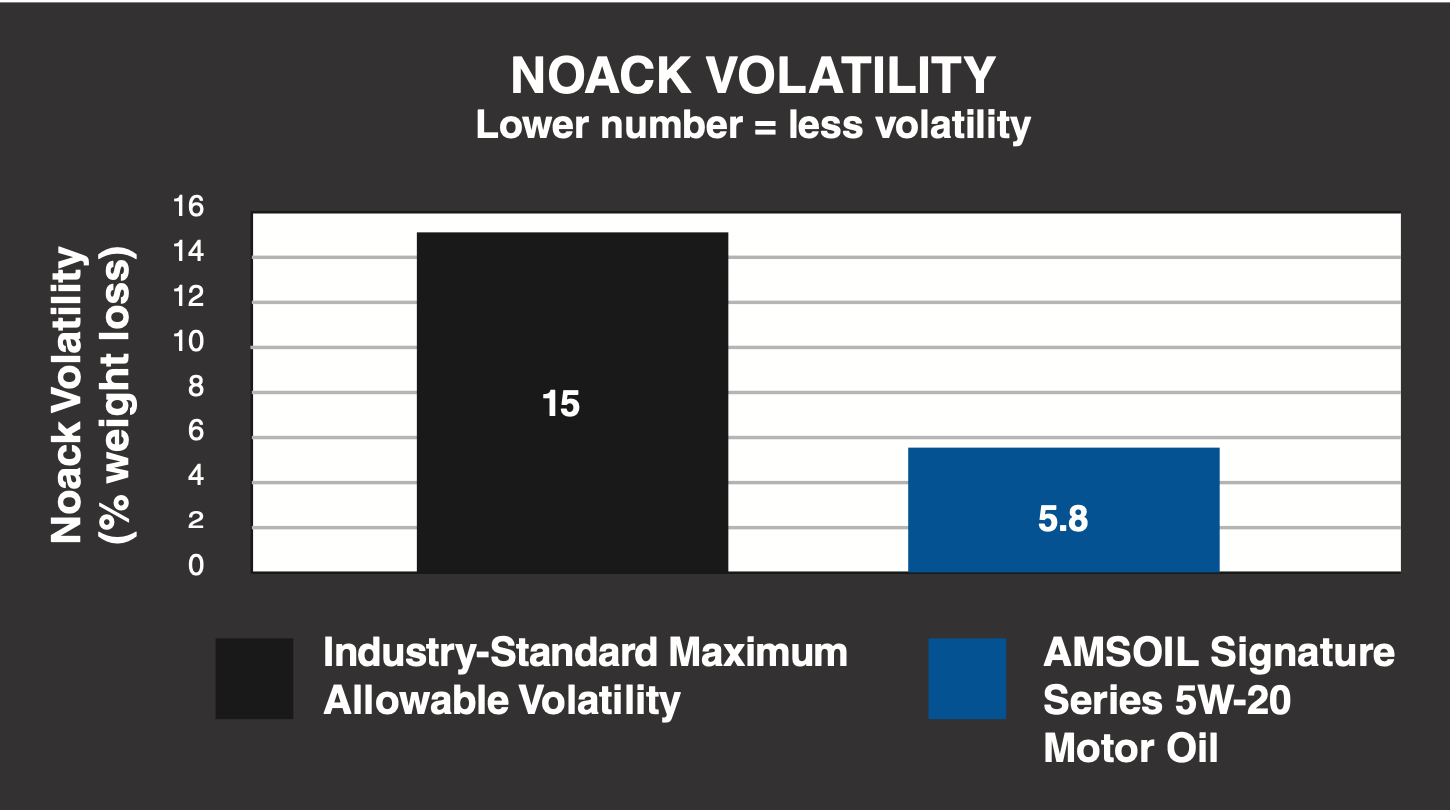Thom Wofford, Lauren Parsons
Authorized AMSOIL Dealers

Thom Wofford,
Owner of TW Synthetics
Crossville, TN | (931) 313-9252
Talk to or Text Thom
For a Free Consultation
OUR BLOG
What Is Volatility
Volatility is the degree to which a lubricant will evaporate when heated during equipment operation.The small lighter molecules heat up and evaporate quicker than the heavier molecules resulting in loss of lubricant volume in the sump over time.
Why Volatility Is Important
Volatility affects more than how fast the lubricant evaporates. As the lubricant evaporates over time its viscosity (thickness) increases over time, forcing the lubricated part to work harder which creates even more heat.
As the lubricant becomes thicker it's harder to pump, which requires more energy resulting in the following problems:
- Loss of performance
- Reduced fuel economy
- Poor cold-temperature starting
- Increased deposits in components
Measuring Volatility
Volatility is most commonly measured by the Noack Volatility Test. In this test a lubricant sample is weighed and heated to 482 degrees Fahrenheit for one hour while dry air is passed over the sample, which carries away the vapors that have boiled off and deposits them in a beaker. Then the original sample is removed and re-weighed. Any reduction in weight is reported as a percentage loss of the original sample. API SP and ILSAC GF-6 performance classifications require volatility weight loss to be no greater than 15 percent for all viscosity grades.
Fire and Flash Points ility.
Flash and fire points show a lubricant's high-temperature performance and stability.
They are measured by the Cleveland Open Cup Test (ASTM D92)in which a fixed volume of lubricant is heated while open to the air at its surface. A small flame is passed over the surface at specific intervals to determine the temperature at which the vapors ignite. This temperature is recorded as the flash point. When the flame on the surface of the lubricant continues to burn for at least 5 seconds after the ignition flame has been removed, the temperature is recorded as the lubricant's fire point. Fire points are generally around 10 to 40 degrees Fahrenheit higher than the flash point.
Flash and fire points are typically around100 to 150 degrees Farhenheit higher than the actual lubricant's usable temperature. Lubricants that are more stable will have flash and fire points that are higher and closer together and are therefore less volatile.
High flash and fire points suggest improved high-temperature stability, which reduces oil consumption and increases the lubricant's service life.
Less Volatility: AMSOIL synthetic lubricants are engineered with a uniform molecular structure and weight. There are fewer light molecules that are susceptible to evaporation so AMSOIL synthetic lubricants are more stable than conventional lubricants and resist burn-off.
High Flash and Fire Points: AMSOIL Synthetic Lubricants display high flash and fire points which ensures they are highly resistant to breakdown at normal operating temperatures. They provde more protection than conventional lubricants by resisting oxidation and thermal breakdown and retain their pumpability and heat transfer properties.
This post adapted from an article in the Sept AMSOIL Magazine/Dealer Edition
